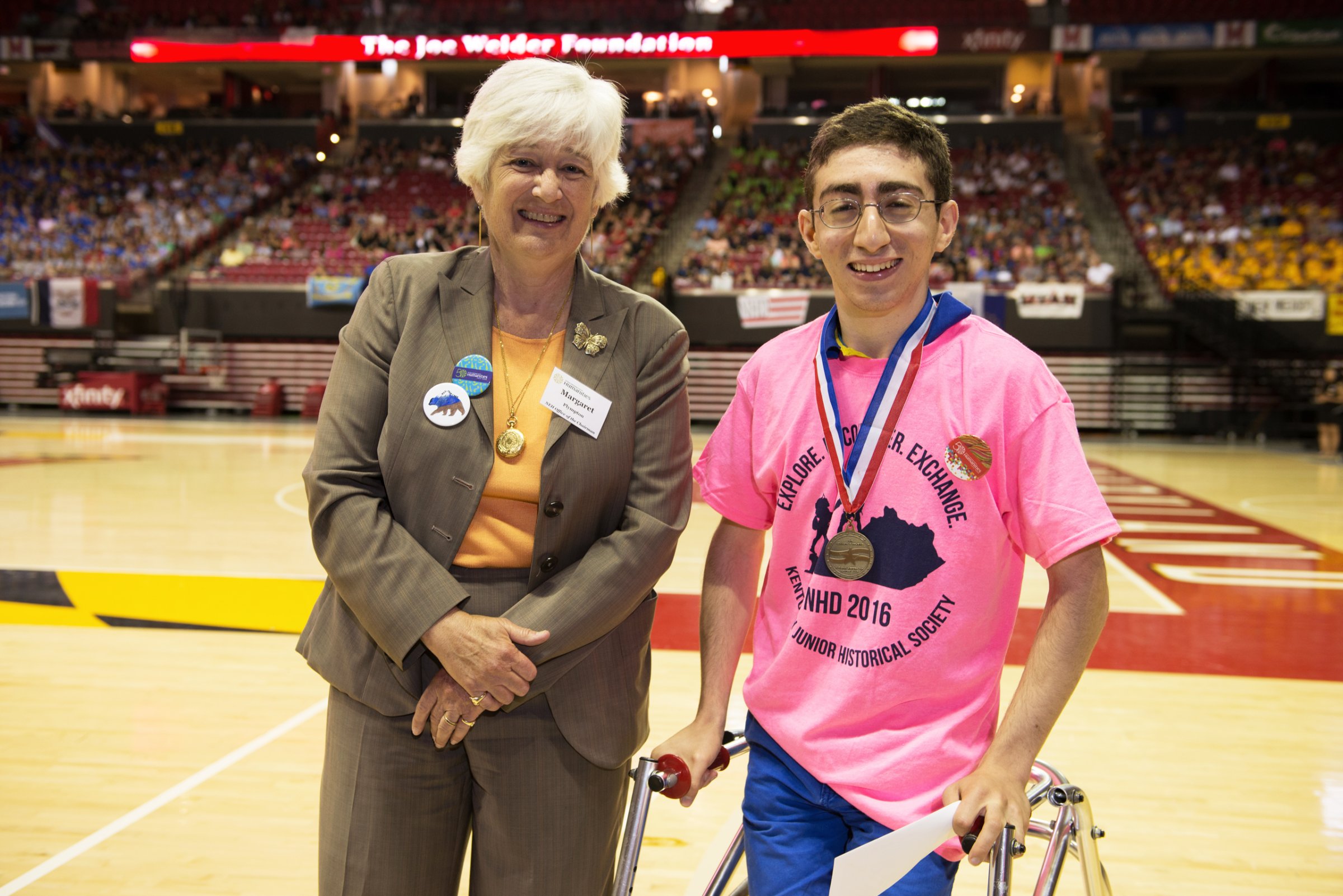
For any middle and high school student, a top grade on a project for a history class is already impressive. Now imagine beating out students worldwide for those top marks.
On Thursday, the Kenneth E. Behring National History Day Contest, announced its 2016 national winners at the University of Maryland in College Park, MD. Nearly 600,000 students from the U.S., its territories and select international schools abroad, submitted work related to the theme “Exploration, Encounter, Exchange in History” at regional-level contests. But less than 1% of them (or nearly 3,000 students) were invited to present their essays, performances, documentaries or websites, at the finals that took place June 12-16.
One of the first place prizes went to Amir Abou-Jaoude, 18, the Stanford-bound valedictorian of Henry Clay High School in Lexington, KY., who earned $1,000 and the title of “National Endowment for the Humanities Scholar” for his 2,500-word essay about the influence of Japanese woodblock prints on Impressionists and Post-Impressionists, such as Claude Monet, Vincent Van Gogh, Paul Cézanne, Camille Pissarro and Mary Cassatt.
Many of these painters were especially inspired by the Japanese artist “Hokusai” (Katsushika Hokusai), known for his famous Great Wave print from his 36 Views of Mount Fuji series.
“Monet remarked to Pissarro, something like ‘Oh, this Hokusai would’ve made a great Impressionist, he’s doing the same things we’re doing,'”Abou-Jaoude says in a phone conversation with TIME. “Picasso saw some of Cézanne’s paintings that were inspired by Hokusai’s prints and that inspired him to start working on cubism. So Japanese woodblock prints were not only crucial to the Impressionist [movement] but also crucial to the development of modern art.”
His paper’s title, “A Pure Invention: Japan, Impressionism, and the West, 1853-1906,” is a play on Oscar Wilde‘s famous remark, “The whole of Japan is a pure invention.” Abou-Jaoude says, “The Impressionists encountered this Japanese art after Japan opened to the West in 1853 after a period of isolation.” Based on the woodblock prints, “Japan represented this place where there was no industrial revolution, this pastoral wilderness,” to the Impressionists and others in the West, but Abou-Jaoude’s paper argues that they didn’t realize how industrialized and militarized the country had become until the Russo-Japanese War of 1906.
The Stanford-bound high school graduate decided to focus on Japanese woodblock prints after seeing the Art Institute of Chicago’s collection. He was able to read Vincent Van Gogh’s letters to his art dealer brother Theo about such works, but a lot of the primary sources on this topic were in French and Japanese, so he had to stick to secondary sources, mostly research by art critics, art historians and art collectors. He also went to museums in Tennessee — the Frist Center for the Visual Arts in Nashville and The Hunter Museum of American Art in Chattanooga — plus the Getty Museum in Los Angeles.
Growing up, Abou-Jaoude says his parents, “dragged me to art museums for years and years to look at Impressionist masterpieces, and I used to not like to go because I didn’t know what I was looking at,” he says. “But once I took AP Art History, I became grateful that I had seen all of that stuff already. It really helped.”
More Must-Reads From TIME
- The 100 Most Influential People of 2024
- Coco Gauff Is Playing for Herself Now
- Scenes From Pro-Palestinian Encampments Across U.S. Universities
- 6 Compliments That Land Every Time
- If You're Dating Right Now , You're Brave: Column
- The AI That Could Heal a Divided Internet
- Fallout Is a Brilliant Model for the Future of Video Game Adaptations
- Want Weekly Recs on What to Watch, Read, and More? Sign Up for Worth Your Time
Write to Olivia B. Waxman at olivia.waxman@time.com